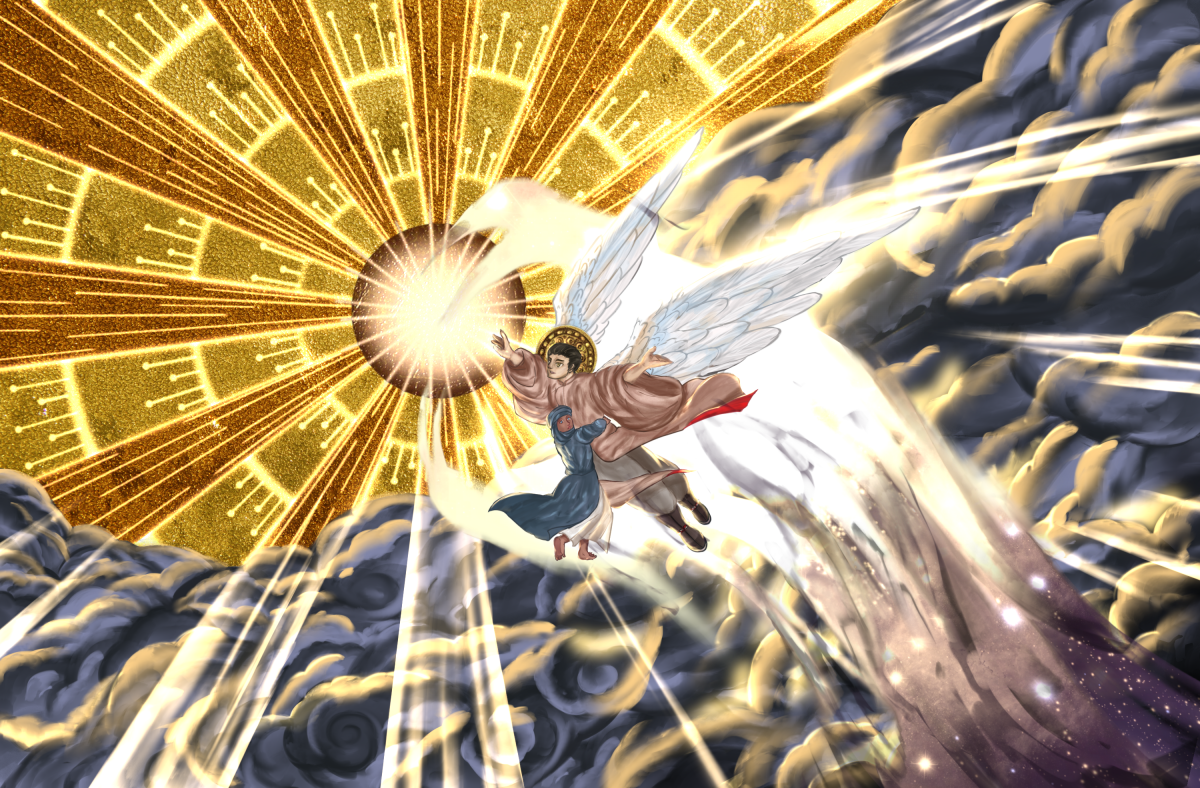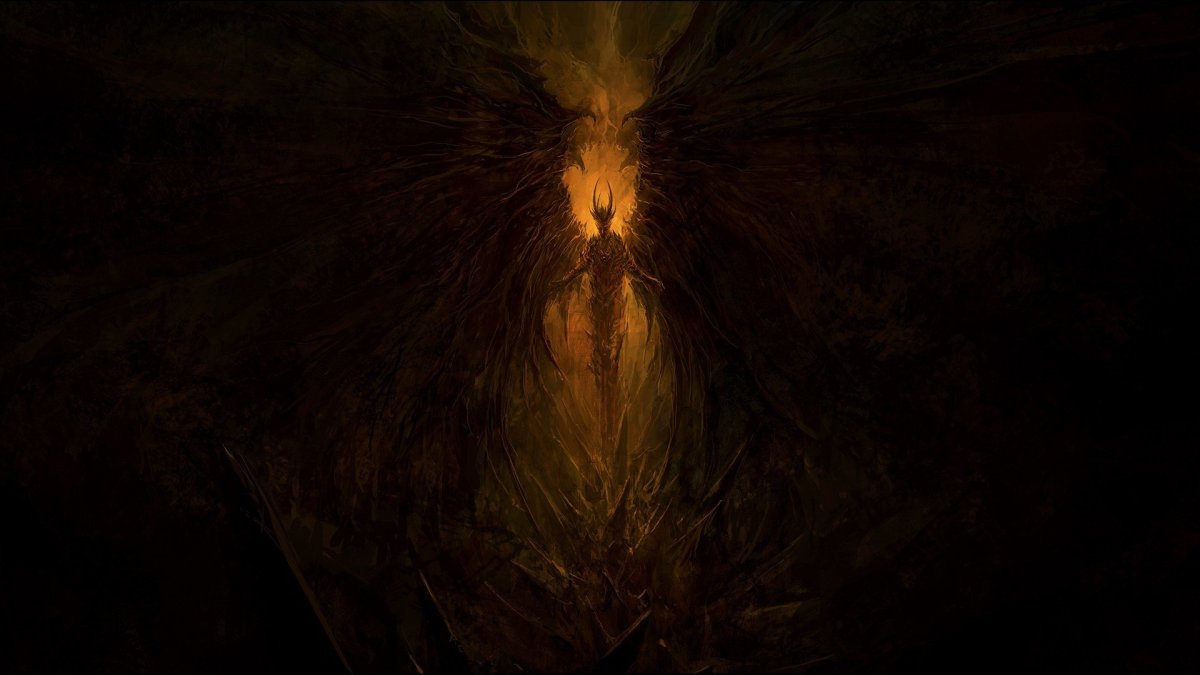Between the various Facebook groups and gaming forums I engage with, the topics of meta-gaming and table talk come up almost weekly and are often initiated by relatively new GMs looking for suggestions of how to control or even ‘punish’ players who engage in these practices. I understand how they feel, because once I was in that position, but over the years I have ultimately have come to the understanding that not only are such strategies in contradiction to the nature and spirit of roleplaying games, but that the very opposition to metagaming and table-talk is an opposition to essential elements of the game experience.
The primary reason for complaint by GMs about players engaging in meta-gaming or table-talk is that it ruins any suspense, surprise or tension that the GM is trying to create by withholding information from the players, which they do in order to allow for a dramatic reveal or an unexpected occurrence at some point in the game. I believe that while the intent of the GMs in this instance is positive, they are reaching for the wrong tools in order to create the desired tension, suspense or drama, and that a primary reason they are reaching for the wrong tools is due to the way they view the gaming experience.
By exploring the concept of Diegesis in RPGs I aim to explain why table-talk and meta-gaming are not actually the problems many people feel them to be, and in fact, should be embraced as essential parts of the gaming experience that can make the whole thing more enjoyable for everyone involved.
First, some quick definitions:
- Table-talk – when players talk about things that are not specific contributions to the in-game/in-character events taking place at that moment.
- Meta-gaming – when a player uses knowledge of the game/rules/setting that their character would not know as the basis of in-character decisions and actions.
The phrase table-talk has it’s origins in card games, particularly Bridge, where non-game related talk might be used to send signals to your partner about the cards in your hand; this effectively constitutes cheating in a competitive game. In discussions about RPGs, table-talk is often similarly framed as a form of cheating. I disagree with the idea that it’s cheating, but insist rather that it’s an essential element of playing an RPG.
Meta-gaming is similarly derided by many as a form of cheating. It needs to be noted here that the term metagaming is used to describe a whole range of behaviours that all hang upon the common element of ‘players using game knowledge the character shouldn’t have’, but varying in extremity based, again, on how GM and player view the nature of the gaming experience. Later in this article I’ll explain how metagaming can be viewed as either an intrinsic necessity of the game or as the result of a person actually refusing to play the role playing game, depending on whether or not they engage with the diegesis of the game.
Before expanding on those points further, I need to outline some key points:
- The inevitability of collaborative plot and narrative.
All RPGS, from the most board-game-like dungeon-hack to the systemless LARP, contain the basic elements of a story; one or more characters (characters), doing stuff (action), in one or more places (setting). And every such story is comprised of two elements, Plot and Narrative.
‘Plot’ means the relevant events of the story in the order that they happened, and ‘Narrative’ broadly refers to the way the events are presented.
In an RPG, everything that a GM and player do is a contribution to a collaborative plot and narrative and it is this process of collaboration that ultimately defines the experience of playing an RPG.
When a player says that their character chooses to open the door on the right, followed by the GM telling them that the sound of the door opening wakes the sleeping ogre on the other side, they are jointly constructing the plot of their collaborative story.
When the player details their character action in any way they are creating narrative, from the simple “I/my character opens the door on the right” to the more elaborate “creeping through the dancing shadows cast by flickering torchlight, stout Grunthold approaches the rightmost door and, after placing the torch in the rusty holder mounted on the wall, grips the handle of his warhammer in one hand and with the other pushes hard to open the door…”
My proposition is that for the vast majority of RPG groups and games out there, the co-creation of a collaborative story is an unavoidable, and in fact defining, aspect of the way the game is played . What tends to vary instead is the degree to which participants in each game think of their game experience in this way.
While some have likened this to the classic trope of Olympian gods seated around a table playing a divine chess game with mortals, I feel that image invites too many expectations of competition, between the players and their characters.
Rather, I prefer to think of an RPG in a similar fashion to the production team of a movie, TV show or theatrical production – the players are the collaborative producers of the story being played, but are simultaneously the audience for whose entertainment the story is being produced.
Once you view your RPG as a being inherently an exercise in collaborative storytelling, then you also are engaging in two other intrinsic elements of such an experience…
- Diegetic and Nondiegetic gameplay
Diegesis refers to anything told by a narrator in a story, usually comprising character actions and thoughts. The term was first detailed by Plato, however in more contemporary parlance, particularly inspired by filmmaking, a Diegetic story element is one which exists within the world of the story, while Non-Diegetic elements are those that exist outside the world of the story but that are included for the sake of the audience.
A common example is that of music. If the character in a film is listening to the radio, then the music they can hear would be diegetic music. But if the audience can hear music that the character cannot (which describes the majority of music in movies) then that is non-diegetic music.
When it comes to RPGs, the act of playing the game also has diegetic and nondiegetic elements, and both are intrinsic parts of the game that are, ultimately, inseparable from each other.
First of all, a player’s knowledge and application of the rules, the act of rolling dice, moving miniatures on a map, questioning or clarifying rules, or otherwise discussing elements of the game are all examples of non-diegetic gameplay. The act of creating a character is a non-diegetic part of playing the game, establishing and adhering to rules is non-diegetic gameplay, and, essentially, any conversation between participants that is not specifically part of the game being played out in a given moment is non-diegetic gameplay.
These elements of non-diegetic gameplay all exist to inform the diegetic gameplay, which is the construction of the collaborative story taking place within the fictional world of your game. Without having created a character or knowing the rules that govern their possible actions, a player cannot effectively decide upon their character’s actions without some knowledge of the rules, or opportunity to clarify their understanding as it relates to the game.
The way in which you play your game may sit anywhere on a sliding scale between the diegetic and nondiegetic elements of gameplay, preferencing one over the other, or trying to strike a balance somewhere in the middle. There’s no right or wrong amount of focus to put on each element except as suits the preferences of the participants of a particular game – but both are, intrinsically, unavoidably, present in your game to some degree.
- Separation of Player from Character
It should seem a fairly obvious statement at this point that while the character is primarily a diegetic element of the game, the player and their engagement with the game constitute non-diegetic gameplay actions.
It is utterly impossible for a player to be part of the diegetic gameplay. Even the most committed of LARPers are still players depicting fictional events constrained by rules of play that are not present inside the fiction (e.g. using boffers or safe combat rules to govern play). So while the barrier between diegetic and nondiegetic gameplay may vary, it is always there to some degree.
The important thing for all GMs and players to be clear on is the delineation of diegetic and nondiegetic elements in their game.
As stated previously, all player activity ultimately manifests in the diegetic frame of the game; characters take certain actions, and succeed or fail in their efforts based on the non-diegetic gameplay actions of the players as they contribute to the collective story.
While the challenges that exist within those stories are primarily diegetic challenges for the characters, that does not preclude the GM from incorporating non-diegetic challenges that are intended for the player to engage with and solve.
Common examples include logic or language puzzles that characters encounter, but the players have a chance to solve as part of the nondiegetic gameplay. They will then either succeed or not, at which point the player might use their character’s stats and related game mechanics to achieve a diegetic solution to the puzzle.
What’s important to remember is that regardless of whether the challenges of a game are approached as part of the diegetic or nondiegetic, the final result is ultimately part of the diegetic game, contributing towards the construction of the collaborative plot and narrative.
Table-talk, therefore, should be viewed as part of non-diegetic gameplay, and an intrinsic part of the game.
In order for characters to take the most appropriate diegetic action, a player may need to clarify their understanding of a situation, or specific rules, etc.
By embracing non-diegetic conversation – even in the middle of combat actions – you’re giving the players a chance to make their diegetic actions richer and more relevant to the story. Managing time and the pace of play is something that needs to be considered, but again, this is an element of non-diegetic gameplay to be worked out within the group, rather than enforced by the GM.
I also find that this conversation is an essential part of helping people who are new to the group, game or even the hobby itself feel supported in their involvement.
(Note – table-talk is a bit different than ‘off-topic conversation’. If you’re trying to run/play a game and someone at the table won’t shut up about last night’s sportsball game, or brings out their craft kit to make costumes for their cats, that’s not non-diegetic action, that’s a different issue altogether.)
Metagaming – the scale between nondiegetic play, and not playing the game.
The definition of metagaming is problematic, but, at least from the GMs perspective, when you view the RPG experience as engaging in nondiegetic gameplay in order to create the diegetic plot and narrative, and prepare game challenges appropriately, most forms of metagaming instead become part of the nondiegetic gameplay and can quickly cease to be a problem.
Ultimately, when the GM and players view playing an RPG as a collaborative exercise in co-constructing plot and narrative within the confines of a specific game, setting or system, player knowledge is not something that risks interfering with the GMs plans, but instead has the potential to enhance the story that grows out of the collaboration.
When the player knows something important about the game world that their character does not, that could inform the players decision to direct their character to take actions that might result in them learning that information, and that search – the player’s contribution to both the plot and narrative of the game – gives the GM a stimulus from which to build new sub-plots and story arcs.
At the more extreme end of the metagaming scale, however, you can encounter problematic behaviours such as players who ignore the diegetic scenario almost entirely, and either set off to pursue their own goals regardless of the collective story, or they insist on using purely nondiegetic solutions to diegetic challenges. Such individuals seem to often have a competitive view of what it means to play a game, and they’re playing to win according to their own definition of what that means.
I argue that such individuals are not actually playing the game. If the game consists of the rules, setting and specific fiction of any given session, then refusing to appropriately engage with all elements is to be, at best, engaging in a close approximation of the game. It’s like having someone turning up to a hockey field with a pink flamingo lawn ornament instead of a hockey stick, while still expecting to be taken seriously.
In such circumstances, the issue is likely to be one of social dynamics and personal relationships, and is not specifically about the game itself, and in the long run, such individuals either need to be brought around to a more collaborative understanding of the activity they are participating in, or in the worst cases, excluded.
So what’s a GM to do?
So if you’re using previously unknown information to create a ‘twist’ in your story, or as a way to introduce drama and tension into a game, then what can a GM do to make the game an interesting experience for the players?
For most games, the random outcomes of dice rolls provide much of the tension, provided that the mechanics of encounters and challenges are at an appropriate level to that of the player characters – the challenge is to treat the outcome of dice rolls not just as ‘wins’ or ‘losses’ but as the prompts for the next action in the plot, or the style of the next piece of the narrative.
The GM can provide additional challenge to the players by incorporating nondiegetic challenges for them to solve, but in RPGs the final outcome of any challenge must be played out diegetically, because if you as a GM make the success or failure dependent purely on the knowledge and skills of the players without at least allowing an option for utilising the rules that govern the diegetic world, then like the Pink Flamingo Player, you’re possibly not playing the same game as your group, either.
However as a GM what you can do is define what is at stake, depending on the characters’ actions. Every campaign, session, story or even action can have clear stakes that give the player and character a reason for the things they do in game.
In combat the stakes are already clearly defined. Win, and your character survives and usually obtain new things. Lose, and they’ll likely die or suffer some other set back.
But why are they fighting in the first place? What is at stake on a broader level if they win, lose or draw?
When you view RPGs as a collaborative experience, these questions quickly provide vehicles for drama, tension, and unexpected outcomes that cannot be duplicated in any other way.
But that’s a topic for a future post.
NOTE: This post has been heavily revised after a number of discussions with other gamers on Reddit and the Onyx Path Forums. Thanks to everyone who challenged some of the initial ideas and helped provide clarity.
 [NOTE: This post sat in my drafts folder for over a year. No, I don’t know why.]
[NOTE: This post sat in my drafts folder for over a year. No, I don’t know why.]





